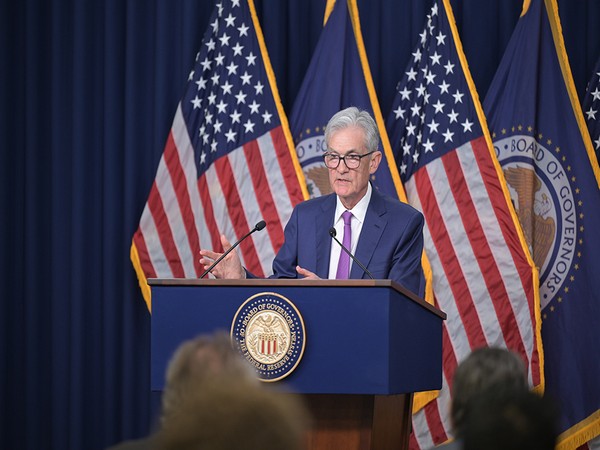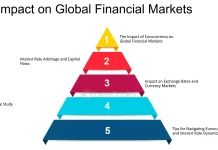US Fed lowers rate by 50 basis points: implications and signals
This significant cut was expected by the market, which had gradually moved away from the initial forecast of a cut half that quantum and toward a half a point drop
The US Federal Reserve made its first interest rate reduction since the early stages of the Covid-19 outbreak when it slashed its benchmark interest rates by half a percentage point. This was a larger than anticipated cut that represented the American central bank’s success over the post-pandemic increase in inflation.
The Federal Open Market Committee, which sets interest rates for the US central bank, last reduced rates by half a percentage point during the global financial crisis in 2008, if the emergency rate reductions made during COVID were to be disregarded.
This significant cut was expected by the market, which had gradually moved away from the initial forecast of a cut half that quantum and toward a half a point drop. Following the announcement of the decrease, Wall Street surged, with Indian markets predicted to follow suit.
Fed Chair Jerome Powell stated, “The US economy is in a good place and our decision today is designed to keep it there,” during a press conference on Wednesday following the announcement of the choices.
Social media’s Effect on Management of Fashion Businesses
“As we start the process of moving towards a more neutral stance, this recalibration of our policy stance will help maintain the strength of the economy and the labor market and will continue to enable further progress on inflation,” the speaker stated. Powell did, however, emphasize that the rates were not following a “preset” trajectory and indicated that the central bank may “dial back policy restraint more slowly” if inflation showed itself to be resilient. He also mentioned that in the event that the labor market unexpectedly weakened, the Fed was prepared to act.
RISING INFLATION
The 1977 modification to the Federal Reserve Act established the US Federal Reserve’s current statutory mandate, which is to encourage maximum employment and stable prices. The dual mandate of the US central bank is the term used to describe these objectives.
The post-meeting statement stated, “The Committee judges that the risks to achieving its employment and inflation goals are roughly in balance, and has gained greater confidence that inflation is moving sustainably toward 2 per cent (inflation target).”
Notably, the FOMC vote was 11-1, with Governor Michelle Bowman—who was sworn in as governor but had previously served as Kansas’ state bank commissioner—choosing a quarter-point move. While several regional presidents have dissented over that time, Bowman’s was the first dissenting vote by a US Fed governor since 2005.
Along with this most recent reduction, the committee hinted at the possibility of 50 more basis point cuts by year’s end through its “dot plot,” which displays the 19 officials’ estimates for the federal funds rate and provides investors with a glimpse into the central bank’s future expectations for the economy. By the end of 2025, another full percentage point of reduction were anticipated, followed by a half point in 2026.
Following a similar reduction in June, the European Central Bank reduced its policy rate by 25 basis points to 3.50 percent last week. Thursday is the last day of central bank meetings for the Reserve Bank of South Africa, the Bank of England, and the Norges Bank in Norway. At the conclusion of its two-day meeting on Friday, the Bank of Japan, which startled some market participants in July by raising borrowing costs, is expected to reveal its most recent rate decision. This concludes what looks to be a busy week for central banks across the globe. The next MPC meeting of the Reserve Bank of India is scheduled for early October (7-9).
MARKET PREDICTION
According to futures contract data tracked by Chicago-based CME Group’s FedWatch Tool, a widely cited proxy for investor expectations, the market expectation of the odds of a 50 basis-point cut by the Fed had sharply increased from last Friday’s 50% to 57% early this week, even as the probability of a 25 basis-point cut slid from 50% to 43%. 27 percent of S&P Dow Jones Indices are owned by the CME group.
The US inflation and jobs outlook were both improving, and the Fed noticed this. “According to recent indicators, economic activity has been growing steadily. The increase in the jobless rate has decreased, but it is still modest. Following the conclusion of the two-day meeting, the FOMC released a statement stating that although inflation has continued to rise, it is still somewhat above the Committee’s 2 percent target. Additionally, it stated that “over the longer run, the Committee seeks to achieve maximum employment and inflation at a rate of two percent.”The Committee now feels more confident that inflation is steadily approaching two percent and believes that there is a reasonable balance between the risks and benefits of reaching its inflation and employment targets. It further stated that the Committee “will continue to monitor the implications of incoming information for the economic outlook” and that a variety of information would be considered in its evaluations, such as readings about the state of the labor market, inflation pressures and expectations, and financial and global developments.
Before the decrease, the Federal Reserve had refrained from making rate cuts that other central banks, like the European Central Bank, had started months earlier, maintaining its benchmark lending rate at a two-decade high of 5.3% since July of last year. Recessions, or major slowdowns in economic growth, have occurred in the United States remarkably every time the Federal Reserve has raised interest rates steadily to combat inflation. It is anticipated that this time will be different since there is a good chance of a soft landing, or a reduction in persistently high levels of inflation without triggering a recession.
THE RESULTS
Similar to other central banks like the RBI, the US Fed primarily uses policy tools to manage the cost and availability of credit in the economy in order to affect employment and inflation. The federal funds rate is the main tool used by the Fed to implement monetary policy. Changes in this rate have an impact on other interest rates, which in turn affect the cost of borrowing for both individuals and businesses as well as the state of the financial system as a whole.
A decrease in interest rates encourages firms to borrow money to grow, purchase equipment, or embark on new ventures, while a rise in household consumption of goods and services results from lower borrowing costs. A stronger demand for products and services ultimately drives increased pay and feeds the growth cycle again. Although there are no clear or direct links between monetary policy and employment or inflation, it plays a significant role in containing out-of-control prices and promoting economic growth.
There could be three possible outcomes from a US interest rate reduction. The interest rate differential between the two nations may increase if the Fed lowers its policy rates, which would increase the appeal of nations like India for the currency carry trade. Up to the point at which the cycle of rate cuts begins in other economies as well, the arbitrage opportunity increases with a decrease in the US interest rate.
A lower rate signal from the Fed would also suggest stronger growth in the US, which might be good news for global economy as well, particularly because China is slowing down and suffering from a real estate crisis. A turbulence in developing market equities might be caused by lower returns in the US debt markets, which would increase the enthusiasm of foreign investors. The potential influence of fund inflows also extends to currency markets.
Like other central banks, the RBI bases its prediction of a rate decrease in the future in part on the US Federal Reserve’s decision to lower interest rates. When the Covid pandemic raged across the nation in May 2020, the RBI last lowered the repo rate by 40 basis points to 4% of GDP. This caused a slowdown in demand, production reduction, and job losses throughout the whole economy. To combat out-of-control inflation, the RBI raised the repo rate by 250 points to 6.5% since then. It is the responsibility of the Indian central bank to maintain inflation at 4% with a 2% margin of safety.





























